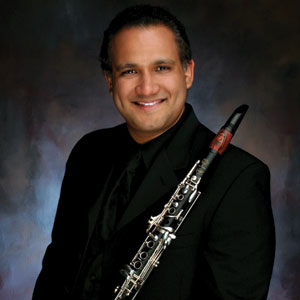By Stephen Brookes • The Washington Post • September 22, 2013
Do you need a huge orchestra to make huge music? The answer — to judge by the Fairfax Symphony Orchestra’s larger-than-life performance at George Mason University on Saturday night — is an emphatic no. Under the baton of music director Christopher Zimmerman, this orchestra has been punching well above its weight for several years now, and its season-opening concert — which paired two of Aaron Copland’s colorful “American” works with the pulse-racing fury of Beethoven’s Seventh Symphony — proved to be an evening of such visceral, spectacular music-making that it won a standing ovation from the packed house. Ricardo MoralesThe program opened with a light touch: a rarely heard work of Copland’s, written when the composer, still in his 20s, was living in Paris and developing the distinctly “American” style he became known for. His “Music for the Theatre” cheerfully mixes jazz with modernism and ranges from an ethereal lento to a growling burlesque straight out of a strip club. It’s a fascinating if not quite mature work — “American” music with a French accent — but great fun, with plenty of solos that gave the wind and brass players room to strut their jazzy sides.
Ricardo MoralesThe program opened with a light touch: a rarely heard work of Copland’s, written when the composer, still in his 20s, was living in Paris and developing the distinctly “American” style he became known for. His “Music for the Theatre” cheerfully mixes jazz with modernism and ranges from an ethereal lento to a growling burlesque straight out of a strip club. It’s a fascinating if not quite mature work — “American” music with a French accent — but great fun, with plenty of solos that gave the wind and brass players room to strut their jazzy sides.
But the evening moved to a deeper level with Copland’s later Clarinet Concerto, in a masterful and evocative performance by clarinetist Ricardo Morales. More subtle and inward-looking than the earlier work, the concerto opens quietly, with a luminous sense of awakening, before the clarinet takes wing in a virtuosic cadenza and soars into the playful, quick-witted second movement. Morales played it with elegance and impeccable style, and he followed it up with the charming “Calypso Serenade” (from Morton Gould’s “Benny’s Gig” suite) as an encore.
It was in the final half of the program, though, that the Fairfax players really came into their own. There are few works of art — maybe few human accomplishments at all — that equal the power and almost overwhelming beauty of Beethoven’s Seventh Symphony, which builds a few simple gestures into a vast musical juggernaut. It’s an extremely difficult work to bring off, but Zimmerman used his relatively small orchestra to brilliant advantage, in a performance that revealed every detail of the music while exploding with a sense of immense scope and vast, unstoppable power.